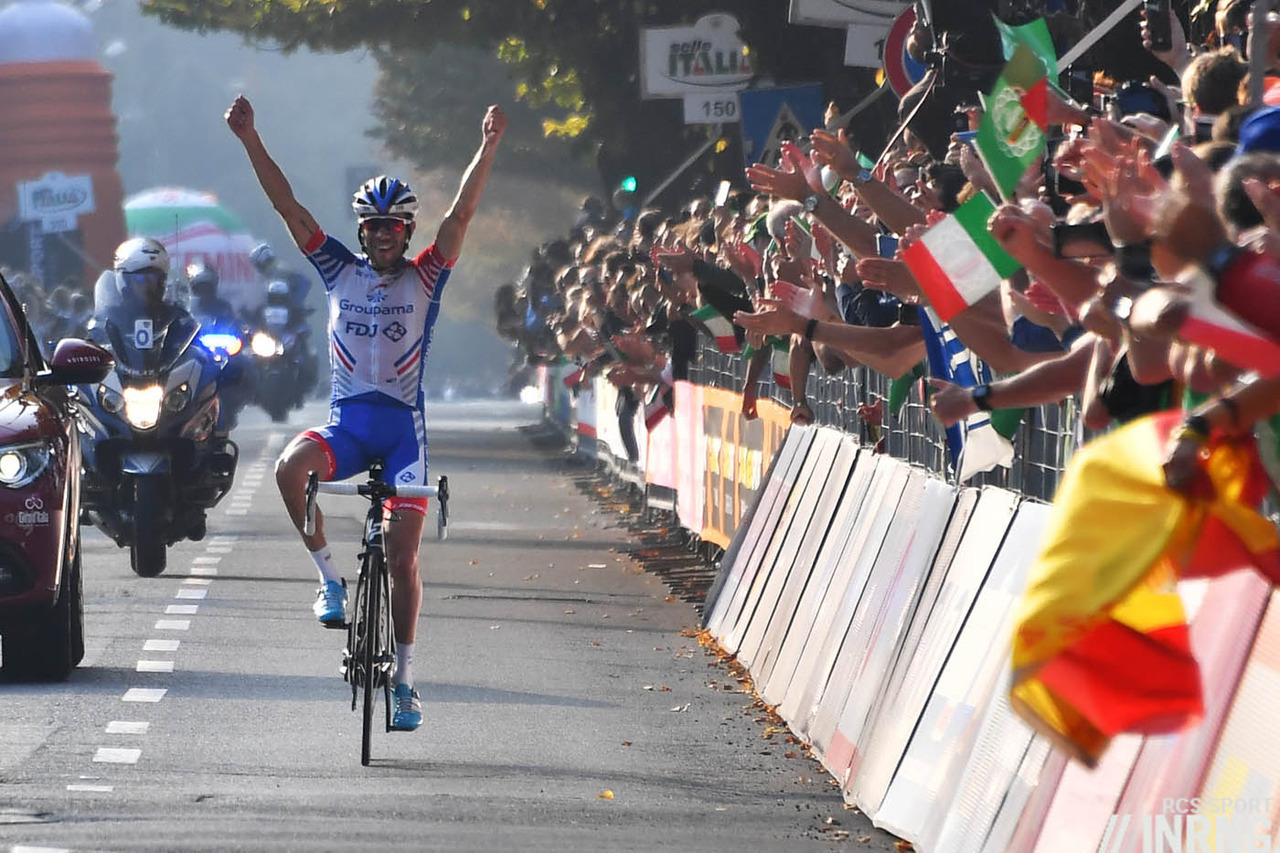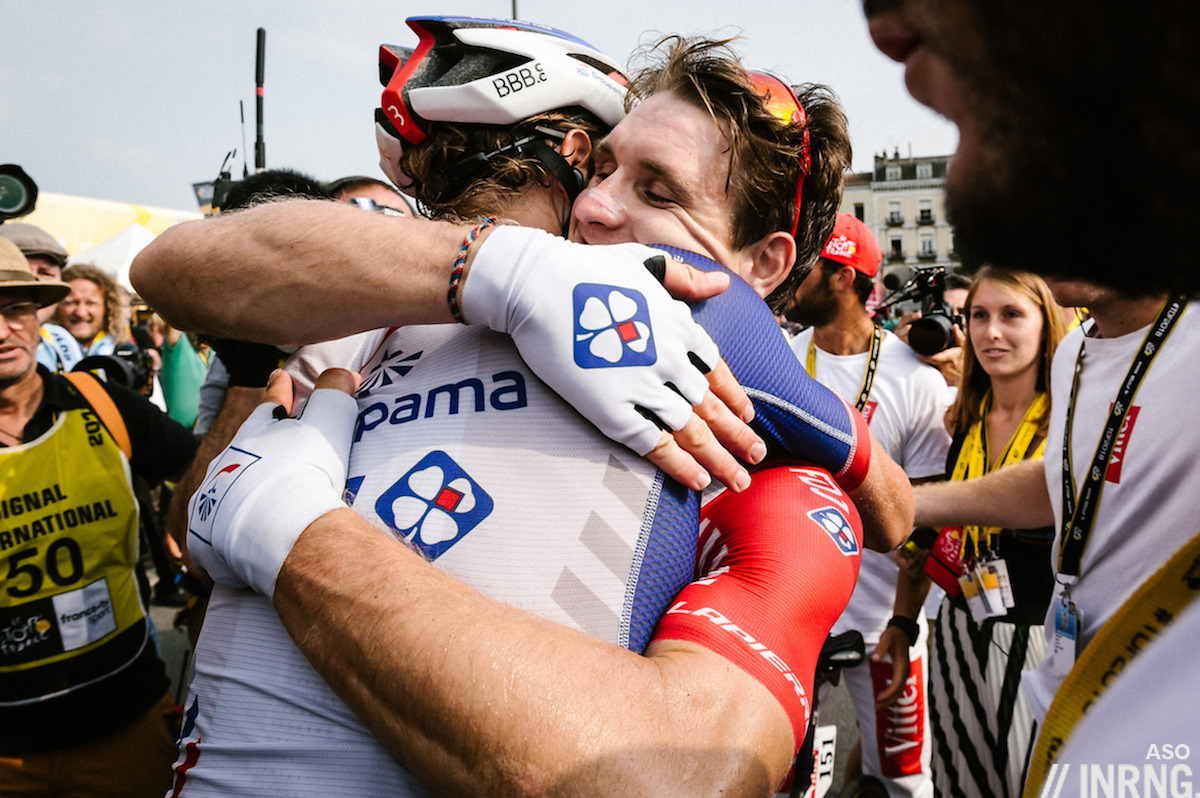The blog has looked at the finances for Team Sky/Ineos and Ag2r La Mondiale for years now but there’s now a third team to add with Groupama-FDJ. They also publish their accounts and there’s plenty of detail, right down to how much their helmet sponsor paid in the year.

Groupama-FDJ? Groupama is short for Groupe des Assurances Mutuelles Agricoles and a French insurance company that is mutually owned by policy holders with rural roots offering home and car insurance for individuals and has a big presence in farm insurance. FDJ is La Française des Jeux, the French national lottery with weekly draws and scratchcards and it has been recently privatised. For years this was the FDJ team but Groupama came onboard during the 2018 season and each sponsor now owns 50% of the team making it one of the rare teams to be owned by the sponsors as often a team is a private company selling naming rights but here it is owned by the sponsors. Both have extended their sponsorship until 2024.
2018? This was the first year with Groupama and FDJ as co-sponsors and they enjoyed some good results. The team had two stage wins in Paris-Nice before Thibaut Pinot won the Tour of the Alps and looked to be heading for a podium finish in the Giro only to implode on the last day in the mountains but returned to take two Vuelta stage wins and win the Tour of Lombardy solo. Arnaud Démare got a precious Tour de France stage win and then achieved the statistical slamdunk of winning the Tour du Poitou-Charentes by taking all five stages, including the time trial. Like the Ag2r accounts, it’s dated from the end of 2018 but takes time to prepare the accounts and file them so we’re looking more than one year back.

That’s the team budget for 2018, €18,736,561 in revenue and a spend of €19,081,358 so a slight loss and like all teams the aim is for a balanced budget. It’s up 21% on the previous year, a big jump.
If we wade into the notes to the accounts we can see a lot more detail. These notes are small explainers to these accounts and help explain the way the team works financially right down to small details.

The team has three sources of revenue, the biggest is “service provision”, ie the act of running a pro cycling team and we’ll explore more details of this in a moment. Next is the sale of merchandise. Then comes the sale of bikes for €181k. Once upon a time some teams would sell their bikes for cash and no questions – perhaps some still do? – but here the money is accounted for.

This above is cropped from Note 27 and sets out the headline sponsorship rates with €14.8 million available from the title sponsors Groupama and FDJ for 2018 and up to €16.4 million for 2019 and 2020.

Other sponsorship revenues are published, here is the annual fee for bike sponsorship from bike brand Lapierre whose parent company Accell pays €1.3 million a year. Helmet company Bell Sports, a sister of Giro, and subsidiary of Vista Outdoor, pays $230k a year.

There’s more revenue, here in Note 19 the team earned €649k from races. One of those arguments that refuses to die is race owners should share profits with teams. They do and here’s the proof, the real problem is that if you comb over the race organiser’s accounts there simply isn’t much money to share. There’s €512k in royalty payments linked to good sales and merchandise, for example whenever you buy a “team issue” frame or a pair of socks with a squad’s branding on it then some money can go to the team. There’s €293k in prize money too, a reminder that prizes are paid to the team to divide up and if the sum involved is small remember that it’s subject to lots of levies before it reaches the team… and it’ll be salami-sliced further before the riders and staff touch it.

A note mentions the wage bill, €13.7 million which works out at 73% of the team budget, comparable to the 70% chez Ag2r La Mondiale. Elsewhere it’s stated the team employed 71 people on 31 December 2018: 28 riders and 43 salaried staff.

Note 8 sets out the deposits paid, money that is blocked. €42,000 is paid to the Ligue Nationale de Cyclisme, the governing body for professional cycling in France, a sort of sidekick to the French federation. The UCI’s World Tour licence was €86,000 plus there’s a €27,000 rental deposit for the service course outside Paris and a €29,000 downpayment with Total, the oil company, presumably the team’s fuel payment card which staff use to refuel the bus and other team vehicles. Small items but costs all the same and combined they’re worth as much as a decent classics or mountains support rider.

Note 27 sets out the big deposit where the team posts a bank guarantee of €2.5 million with the governing body but technically the team hasn’t paid for this out of its budget, instead the sponsor has helped. This can be called on if a team goes under during the year allowing wages to be paid. It seems very unlikely that a team owned by two giant corporates would vanish but the UCI rules don’t want to attempt to rate the creditworthiness of sponsors… something riders and agents might be doing instead during these times.
Conclusion
Just seeing the headline budget of €18.7 million for 2018 is instructive but these accounts contain plenty of notes and details. Above is just the main breakdowns and details, there are too many items to list, for example they also sold off a team bus for €523k during the year which makes you wonder what a new one costs.
There’s a wider value too in that more accounts from more teams helps us build up a bigger picture of team finances as a whole, such as the share of budget spent on wages or the going rate for bike sponsorship although this of course varies. Note that Ag2r La Mondiale’s budget of €17.6m and Groupama-FDJ’s €18.7m added together still falls short of Team Sky’s €41.8m for 2018.
- Exchange rates at 31 December 2018: €1 = US$ 1.14 = AU$1.63 = £0.89 GBP
- More team accounts: Ag2r La Mondiale and Team Sky


The budget increases by €1,6M for 2019 and 2020. As the 14 rider Conti team came into existence in 2019 and was intended to continue in 2020, can we assume that the Conti salaries and expenses will be covered by the increase, and that financially the WT and Conti teams form part of the same structure and budget? What might be the budget of such a Conti team?
This was 2018 so the spend for 2019 isn’t yet in the accounts.As you say the team has started a development team and this is an extra expense but also an investment, already it looks like a good pipeline for recruiting new riders.
I like the holding company name – The Break Management Company
A variation on Tour Racing Limited.